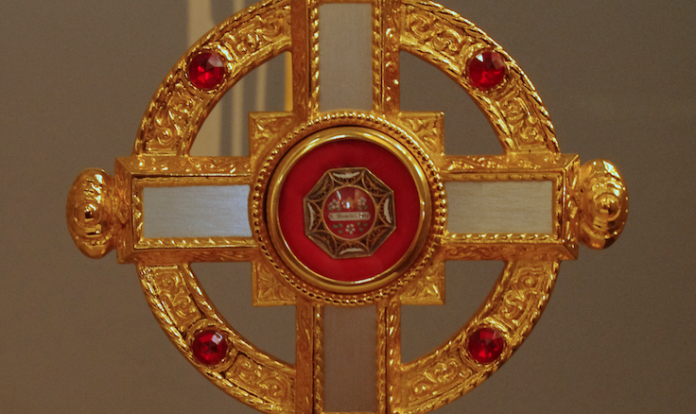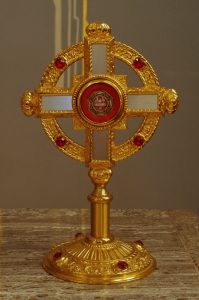

Question: The Catholic newspaper in my area has been advertising different opportunities to venerate a certain saint’s relics that will be traveling to our local cathedral. What is the difference between first-class relics and second- and third-class relics? Please help me understand how relics might be of interest to my fifth-grade students so we might participate in this kind of opportunity. — PATTY A.
James Blankenship responds …
Patty, that’s a good question. This episode from the Bible gives us a starting point to discuss it.
And so Elisha died and was buried. At that time of year, bands of Moabites used to raid the land.
Once some people were burying a man, when suddenly they saw such a raiding band. So they cast the man into the grave of Elisha, and everyone went off. But when the man came in contact with the bones of Elisha, he came back to life and got to his feet (2 Kings 13:20-21).
The tradition of venerating relics of holy people is ancient, dating back to the time of the prophet Elisha. The early Christians maintained this tradition of venerating relics. In the catacombs in Rome you can tell where a very holy person, or perhaps even a saint, was buried, because there is an altar set above it, ready for Mass. The early Christians would even set up altars on the tombs of saints in order to celebrate Mass. The tradition continues today by placing relics in the altar of a church, or sometimes having them on display in reliquaries.
Relics are categorized into first-, second-, or third-class categories. A first-class relic is a piece of the actual body of the saint, such as a piece of bone or hair. A second-class relic is usually an object used by the saint, such as a saint’s religious habit or prayer book. A third-class relic is an object that is touched to a first-class relic. If you venerate a first-class relic and touch a holy card to that relic, the holy card becomes a third-class relic!
Relics are a profound and personal way to share our faith in the communion of saints. The lives of the saints are inspirational, and relics make their fantastic stories real! Every time I bring relics to a class, all the kids are mesmerized. They become very inquisitive, and it provides a great opportunity to teach them about that particular saint. If relics are at your cathedral, build interest in visiting by telling the saint’s story. And don’t forget to ask for that saint’s intercession!
James Blankenship is the director of religious education at St. Francis De Sales Church in Purcellville, Virginia. He is founder of the St. Isidore Project, dedicated to the poor by growing food and offering education and community.
This article was originally published in Catechist, March 2017.
Image credit: Nheyob, Fat Camera /ISTOCK




